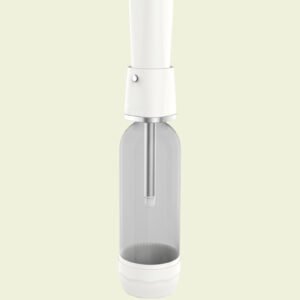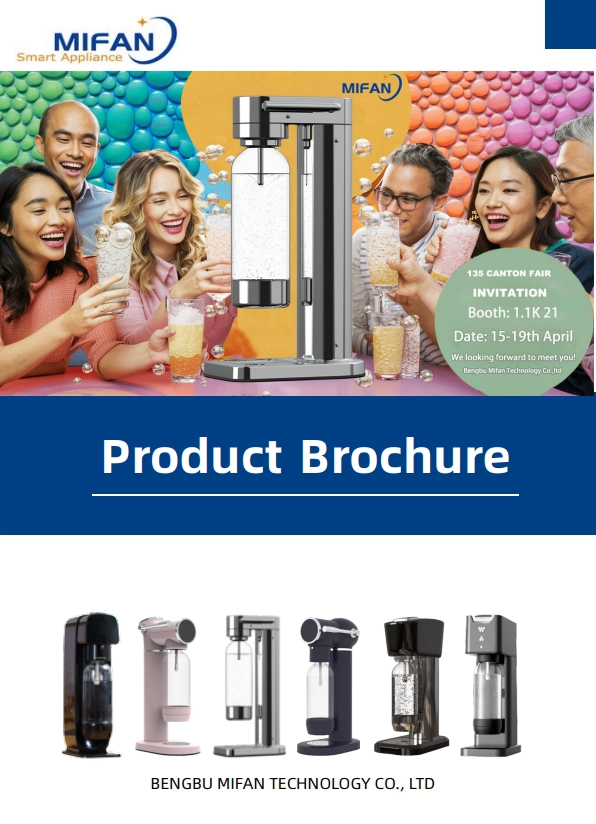描述
Introduction to CO2 Carbonator Machines
CO2 carbonator machines have become an increasingly popular choice for creating sparkling water in both home and commercial settings. These machines function by infusing water with carbon dioxide (CO2) gas, transforming still water into fizzy, refreshing sparkling water. The primary components of a CO2 carbonator machine include a CO2 cylinder, a water reservoir, and a carbonation nozzle. Each component plays a crucial role in the carbonation process, ensuring the consistent production of high-quality sparkling water.
The CO2 cylinder stores the carbon dioxide gas that is used to carbonate the water. When activated, the gas travels through the carbonation nozzle, which diffuses it into the water stored in the reservoir. This process creates the characteristic bubbles and effervescence found in sparkling water. The simplicity and efficiency of this mechanism have contributed to the growing popularity of CO2 carbonator machines among enthusiasts and businesses alike.
One of the key benefits of using a CO2 carbonator machine is the potential for significant cost savings. By producing sparkling water at home or in a commercial setting, users can reduce their reliance on purchasing pre-packaged sparkling water, which can be expensive over time. Additionally, carbonator machines offer environmental advantages by minimizing plastic bottle waste, aligning with the increasing demand for sustainable and eco-friendly practices.
Another advantage of CO2 carbonator machines is the ability to customize carbonation levels. Users can adjust the amount of CO2 infused into the water, allowing for a personalized sparkling water experience. This level of customization is particularly appealing to individuals who prefer varying degrees of fizziness in their drinks.
In summary, CO2 carbonator machines are an effective and efficient solution for producing sparkling water. With their growing popularity in both home and commercial environments, these machines offer cost savings, environmental benefits, and the flexibility to customize carbonation levels, making them a valuable addition to any setting.
Key Features and Specifications of Factory-Selling Carbonator Machines
When it comes to choosing a factory-selling CO2 carbonator machine, understanding the key features and technical specifications is crucial. These machines are designed to infuse water with carbon dioxide, transforming it into sparkling water. One of the primary aspects to consider is the range of models available. Factory-direct carbonator machines often come in various sizes and capacities, catering to different needs, from household use to commercial settings.
The capacity of these machines can vary significantly. Smaller models might offer a capacity suitable for personal use, typically around 1-2 liters per cycle, while larger, industrial models can handle upwards of 10 liters or more. The materials used in construction are another critical factor. High-quality carbonator machines often feature stainless steel or durable plastic components, ensuring longevity and resistance to corrosion.
Unique features such as adjustable carbonation levels are particularly appealing. These allow users to customize the amount of fizz in their sparkling water, catering to individual preferences. Additionally, factory-selling carbonator machines are often designed for ease of use, featuring simple controls and clear instructions. Many models are also compatible with various types of water bottles, adding to their versatility.
Safety features are paramount in these machines. Look for models that include automatic shut-off mechanisms and pressure relief valves. These safety features prevent over-carbonation and ensure the machine operates within safe parameters. Energy efficiency is another consideration, with many modern carbonator machines designed to consume minimal electricity while operating efficiently.
Maintenance is an essential aspect of owning a carbonator machine. Factory-selling models often come with user-friendly maintenance requirements, such as easy-to-clean components and accessible CO2 cartridge replacements. Some models even feature self-cleaning functions, reducing the manual effort required to keep the machine in optimal condition.
In comparing different models, factors such as price, capacity, material quality, and additional features should be weighed carefully. By understanding the specific features and technical specifications of factory-selling carbonator machines, consumers can make an informed decision that best suits their sparkling water needs.
How to Set Up and Use Your CO2 Carbonator Machine
Setting up a CO2 carbonator machine for sparkling water is a straightforward process that begins with unboxing and assembling the machine. Start by carefully removing all components from the packaging. Ensure you have the main unit, CO2 cylinder, water reservoir, and any accompanying accessories or manuals.
First, assemble the main unit according to the manufacturer’s instructions. Typically, this involves attaching the drip tray and securing any removable parts. Once the main unit is assembled, proceed to attach the CO2 cylinder. Most CO2 carbonator machines have a designated compartment for the cylinder, often located at the back or bottom of the unit. Insert the cylinder and twist it clockwise until it is firmly in place.
Next, fill the water reservoir with cold, filtered water. Cold water carbonates more effectively and retains bubbles longer. Secure the water reservoir onto the main unit, ensuring it clicks into place. Now, your machine is ready to carbonate water.
To carbonate the water, place a compatible bottle or container filled with cold water into the machine’s carbonation chamber. Press the carbonation button or lever according to your machine’s specifications. Most machines allow you to control the level of fizziness by adjusting the duration or intensity of carbonation. For light fizz, a short press may suffice, while a longer press or multiple presses may be required for a stronger fizz.
Common troubleshooting issues include insufficient carbonation, leakage, and unusual noises. If you experience weak carbonation, ensure the CO2 cylinder is securely attached and not empty. Leaks can often be resolved by checking all connections and seals. If the machine emits unusual noises, refer to the troubleshooting section in the user manual or contact customer support.
Regular maintenance and cleaning are crucial for the optimal performance and longevity of your CO2 carbonator machine. Clean the water reservoir and any detachable parts with warm, soapy water. Periodically wipe down the exterior and interior components with a damp cloth to prevent buildup of residue. Regularly check the CO2 cylinder for any signs of wear or damage and replace it as necessary.
Benefits and Environmental Impact of Using a CO2 Carbonator Machine
The adoption of a CO2 carbonator machine for producing sparkling water offers a multitude of benefits, both for individual users and the environment. One of the most significant advantages is the cost savings. Regularly purchasing bottled sparkling water can be expensive over time. With a carbonator machine, users can produce their own sparkling water at a fraction of the cost, providing an economical alternative to store-bought options. This cost efficiency is further amplified by the convenience factor; having a carbonator machine at home means you can enjoy sparkling water on demand, eliminating the need for frequent trips to the store.
Beyond the financial and convenience aspects, using a CO2 carbonator machine also has substantial environmental benefits. By opting to carbonate water at home, users significantly reduce their reliance on single-use plastic bottles. This reduction in plastic waste is crucial, as plastic pollution remains a major environmental challenge. Furthermore, producing sparkling water on-site minimizes the carbon footprint associated with the transportation and distribution of bottled water, thereby contributing positively to environmental sustainability.
Numerous testimonials and case studies highlight the transformative impact of switching to a carbonator machine. Users often report an enhanced lifestyle, enjoying the luxury of fresh, sparkling water whenever they desire, without the associated environmental guilt. For instance, one user noted, “Since switching to a CO2 carbonator machine, I’ve not only saved money but also reduced my household plastic waste by over 70%.” Another case study emphasized the broader impact, with a corporate office reducing its annual bottled water consumption by thousands of units, aligning with their sustainability goals.
Considering both personal and environmental benefits, investing in a factory-sold CO2 carbonator machine is a sound decision. It offers a sustainable, cost-effective solution for sparkling water enthusiasts while contributing to broader environmental conservation efforts. We encourage readers to explore this option to enhance their lifestyle and support environmental sustainability.







评价
目前还没有评价